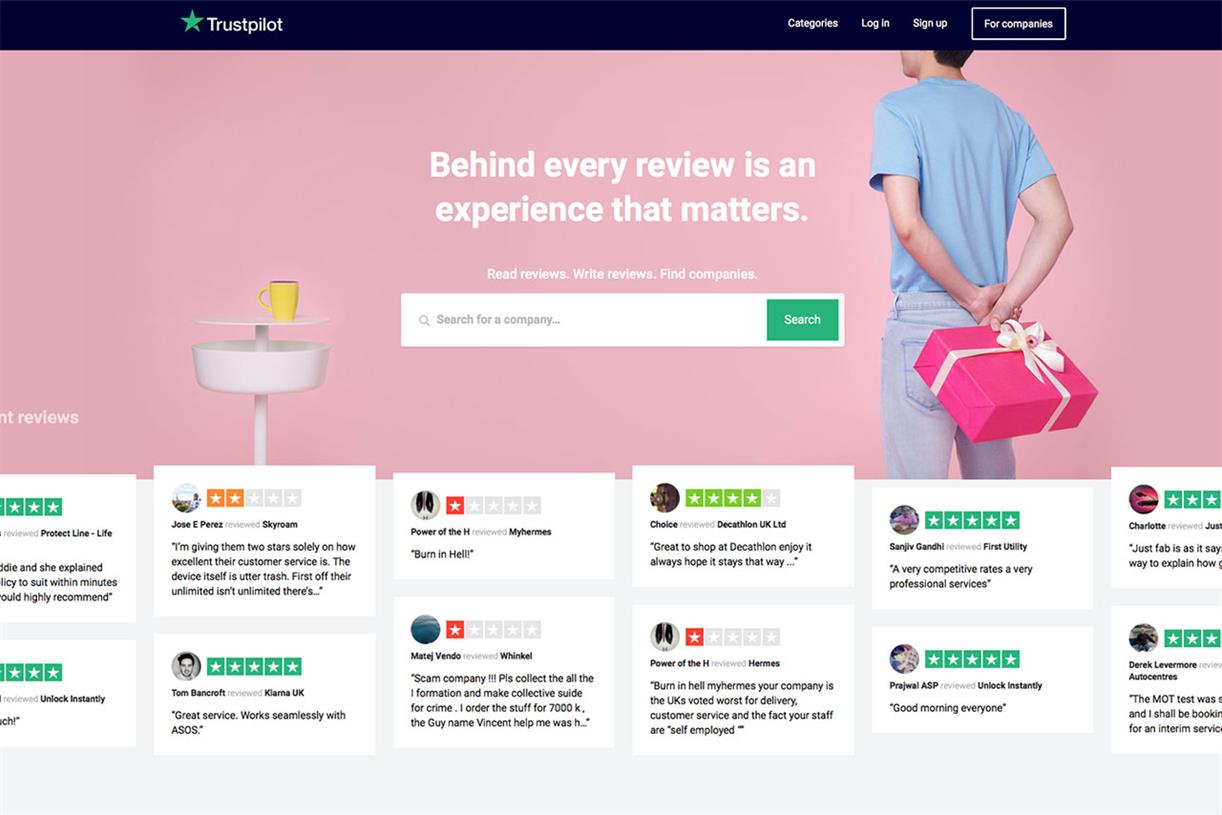Your Content Purpose: A Guide
Knowing why you’re writing stellar content guides every aim at your business goals. Here, we read between the lines for five kinds of marketing content.

Content comes in all shapes and sizes and can change to suit its audience’s needs. Really, there’s an endless variety of content — it’s not limited to a few types.
That said, there are a few basic varieties of content marketing to get you started. These include:
Blogs.Case studies.White papers.eBooks.Emails.Social media.Guest content.All of these categories have one purpose in common: They’re designed to entice audiences into engaging with a product or service, with the aim of gaining and retaining a loyal consumer base. Ultimately, it’s about improving the customer experience with your brand. Good content marketing always achieves that.
But that doesn’t mean you can approach all these types in the same way. There are different varieties of content for a reason, and they’re all handled differently.
Sometimes, your content marketing is meant to educate. Other times, it’s meant to inspire. While the core idea of any piece of content is gaining and retaining customers, you can go about it in quite a few different fashions.
1. Strategy for Blogs and Case Studies
Blogs are one of the most common and versatile types of content, and this makes them worth an exhaustive approach. Whether it’s to educate, inspire or provide a value proposition, blogs can do it all.
Case studies propose a research problem and attempt to solve it theoretically.
What Is the Purpose of Blogs?
A key word when thinking about blogs is “education.” When a customer asks a question, you provide an answer. That’s the idea at the heart of an educational content strategy, which often comes in the form of a blog post. As an example, this piece you’re reading right now would probably be considered primarily an educational blog. We’re explaining something in detail, after all.
Building Trust
Of course, that’s not the only idea. Another is trust: If your potential customers don’t trust you to answer their questions to begin with, they’re not going to listen to you, and that means they’re not going to become customers.
How do you build trust? By providing good, reliable answers to your customers’ questions. The more you do that, the more likely people will start believing you’re an authority in your area of expertise. This creates and encourages brand awareness so your brand can stand out.
Inspiring
Another thing blogs can do — although this is often secondary to being educational — is inspire. While educational content marketing serves to answer a question, inspirational content is meant to connect with your audience’s emotions. The underlying goal of increasing brand awareness is the same — inspiration-based content marketing is just a different way of going about it. It’s certainly possible to inspire with blogs, though usually only for specific industries.
For example, many self-help blogs are designed to inspire. While the goal is to get the reader to do something, these types of blogs don’t just want to connect with them using logic, they also want to motivate the audience, i.e., inspire them.
Value Propositions
Keep in mind your brand’s value propositions as you develop your content strategy. A value proposition explains to the customer why it’s worth purchasing your product. What makes your product unique and different? How does it stand out from the competition? Why is it worth buying your product over anyone else’s? Answering these basic questions is at the heart of a value proposition. Blogs aren’t really designed with this in mind — value propositions are probably better suited to landing pages — but that doesn’t mean there’s a rule against it.
Within blogs, this is unapologetic marketing, and your readers know it. Thus, it helps for value propositions to be direct, clear and honest. Don’t waste your reader’s time or make promises you can’t keep, and always avoid confusing them with vague messaging.
Brand Voice
Core to any content marketing initiative, including your blog, is brand voice. Your brand voice is the consistent personality you portray across all your content to best connect with your audience. For example, you wouldn’t write for teens the same way you would appeal to a law firm’s audience. You can technically get away without having a distinct brand voice, but that will harm your ability to resonate with your target audience, so it’s probably worth taking the time to create and maintain one.
Take Nike, for example. All of their content has underlying tones of power and inspiration, and they never deviate from this style. That’s what makes Nike, Nike. Your brand should do the same, but in your own voice.
CTAs
Many blogs contain calls to action (CTAs). A call to action tells your audience what they should do after reading your blog. Common CTAs might be, “Contact us today to get started,” or “Subscribe to our newsletter for more information.”
CTAs — if they’re to be included — are often placed at the end of a blog but can be interspersed thoughtfully throughout the content as well. This goes back to having authority and trust with your content. People need to want to read more of your blogs for answers to questions and information that pertains to them.
Long-form vs. Short-form
Some blog content is long-form, though what constitutes “long-form” differs from company to company. One might say anything over 800 words is long-form, whereas another might say a piece should be 2,000 words to qualify. Blogs come in many lengths, but long-form content is, as you might expect, the most informational. This is highly in-depth content marketing. It can be tricky to keep your audience engaged throughout long-form content, but the payoff can be well worth it, greatly increasing the authority of your brand.
Short-form content, on the other hand, also contributes value to a content strategy. Restricted word counts can help get to the point faster and encourage strong engagement throughout the entire piece.
What Is the Purpose of Case Studies?
The emphasis here is on “study,” as these take a real-world scenario and investigate it to prove a point. Case studies can be focused on:
People.Phenomenons.Organizations.Events.Places.Practically anything else.The question a case study tries to answer can be almost anything. Maybe you want to study an ecological effect or a marketing strategy. Some case studies are merely descriptive if they’re not trying to solve a specific problem.
Case studies can use either qualitative or quantitative data to answer a question. Qualitative data is more commonly used.
There are many different kinds of case studies. Many aim to educate, while others aim to inspire. Marketing case studies often contain CTAs encouraging the reader to reach out to inquire about services. Like blogs, this type of content is very versatile and can be used to support various stages of the marketing funnel.
Subscribe to
The Content Marketer
Get weekly insights, advice and opinions about all things digital marketing.
Thanks for subscribing! Keep an eye out for a Welcome email from us shortly. If you don’t see it come through, check your spam folder and mark the email as “not spam.”
2. Content for White Papers and eBooks
White papers and eBooks have similar objectives, but white papers are typically more comprehensive and often longer than eBooks. White papers often contain original research and a lot of statistics with a bunch of visual aids, such as graphs or charts.
What Is the Purpose of White Papers and eBooks?
White papers and eBooks are, at their core, educational content. Their aim is to explain something to the reader, whether it’s a product, service or research study. White papers are more like reference material, though eBooks can aim to inspire. eBooks can have different or similar topics and campaign goals.
White papers and eBooks are out to prove a point, so value propositions should certainly be included.
CTAs are certainly welcome. If you Google “examples where CTAs didn’t work in white papers or eBooks,” it’s unlikely you’ll find anything. By all means, place CTAs in these content formats.
White papers are virtually always long-form, as they’re some of the most detailed types of content marketing. eBooks can be and often are long-form, though not necessarily, as they’re more suited to quick takeaways.
Many white papers and eBooks are gated. Gated content is anything that requires a lead capture form to access. For example, an eBook conversion landing page might say, “Want to know how much you can save? Enter your email and find out.” There’s no way to access the content without entering your email address and waiting for the link, so the content is “gated.” This gives it a “premium” feel.
Many eBooks and white papers are gated content to get that premium quality. This type of content marketing strategy makes the document — and the customers that ask for it — feel special and exclusive.
3. The Purpose of Emails
Anyone with an email account is already familiar with this content marketing strategy. Emails are cheap, easy to distribute and often very effective. You can use them to inform your customers of:
Sales and offers.Appointments.Blog updates.Product or service review opportunities.Polls.And much more.What Is the Purpose of Email?
There are many great things about email marketing, but perhaps the most important is just how versatile it is. You can tell your customers about anything you want, and if it catches their eye, they will gladly view and engage with this type of content.
While you can inform your audience about whatever you like in emails, it doesn’t mean much if they don’t open them. However, it’s a different story if they’re expecting your communication. For example, newsletters are a great way to educate your customers.
Emails can be solid places for inspiring content. Many people get quite a few emails per day, so they will likely welcome a genuinely motivating one.
Brand voice also matters in emails, just like in any other place. This especially applies if you’re trying to connect with a particular demographic. Customers tend to expect that your brand voice will remain the same throughout all your content, so put it in your emails, too.
CTAs are important, too. Emails are all about CTAs. Whether it’s to read a newsletter, fill out a form, confirm an appointment or something else, an email is a perfect place for it.
4. Social Media Content
The ever-increasing importance of social media means it’s where a lot of brands invest their content marketing efforts, and for good reason: It’s often vital to any content creation strategy.
What Is the Purpose of Social Media?
You have to be careful with social media posts because of character limits. Taking a nuanced approach to social media is important, and you need to be particular about how many characters you use. You can certainly include educational content in social media — especially if you take advantage of threads — it’s just necessarily different from including the same content in other types of content, such as a blog.
Social media is a great place to put inspirational content, since it doesn’t take many characters to put, say, a quote, CTA or other motivating statement.
You can learn a lot about how to form your value propositions by listening to your customers on social media, but posts on the platform probably aren’t the best place to put that sort of thing.
Keep your brand voice in mind when you’re pursuing a social media content marketing strategy. Brand voice is extremely important on social media because, as mentioned, this is how you express your brand’s personality.
5. Guest Content Pieces
A guest content piece is exactly what it sounds like: A guest writer contributes content, often to your blog. These are commonly writers from other companies who have something to offer in their own unique voice.
You might be wondering, “I have my own writers for that. Why would I want someone else to contribute to my blog?” The advantages may not be immediately obvious — but trust us, there are quite a few, and we’re happy to explain them.
What Is the Purpose of a Guest Content Piece?
There are many benefits to guest content pieces:
It helps out your SEO. It’s common for a guest writer to include links to their own blog when writing for yours and vice-versa, which builds backlinks. These can often rank you higher on search engines. Mentions of your brand on external websites might also help with this. Be careful you don’t abuse the function — Google has built-in protections against too many of these, so your content will actually rank lower if backlinks aren’t done right.You get to trade blog audiences. Sharing blog content also means sharing the audiences that read them. Chances are your target demographics are similar, so guest content can give both of you a big boost.Earn a little extra money. Guest blogging can have the same ROI as regular blogging. Others can share their content with you, and you can share your content with them. Either way, it’s a joint project.Build authority. If you’re posting on other websites or guest writers are posting on yours, it can make your brand stand out as trustworthy.Keep in mind that the guest blog itself commonly has the same purpose as your own blogs. They can educate or inspire, and they can include value propositions and CTAs. The difference is that guest blogging, when done properly, can work even better than blogging on your own site.
Get the Most Out of Your Content By Identifying Purpose
The content marketing landscape is vast, and there’s room for all different types of content. Whatever your content marketing strategy is, make sure it matches different content types. Each has its strengths and weaknesses as well as an intended purpose. Remember the core rule: All content should work to gain and retain customers. As long as you keep that in mind — as well as the purpose of whatever it is you want to publish — you can put your brand over the top with the best content out there.

 JimMin
JimMin 












_1.jpg)



















